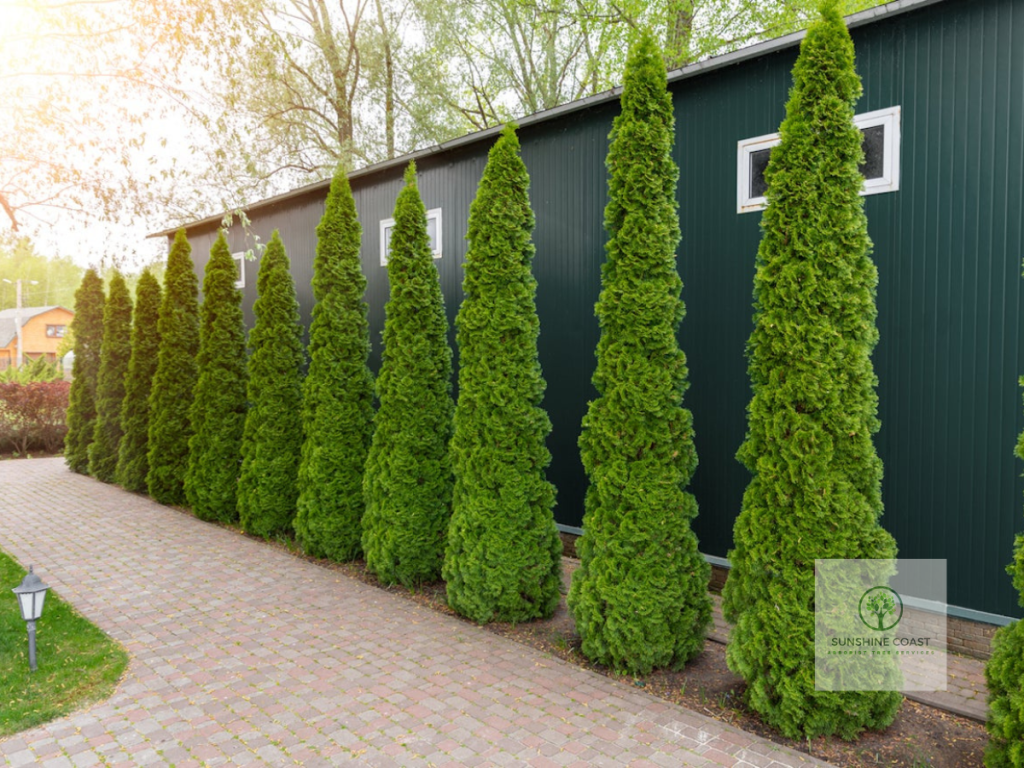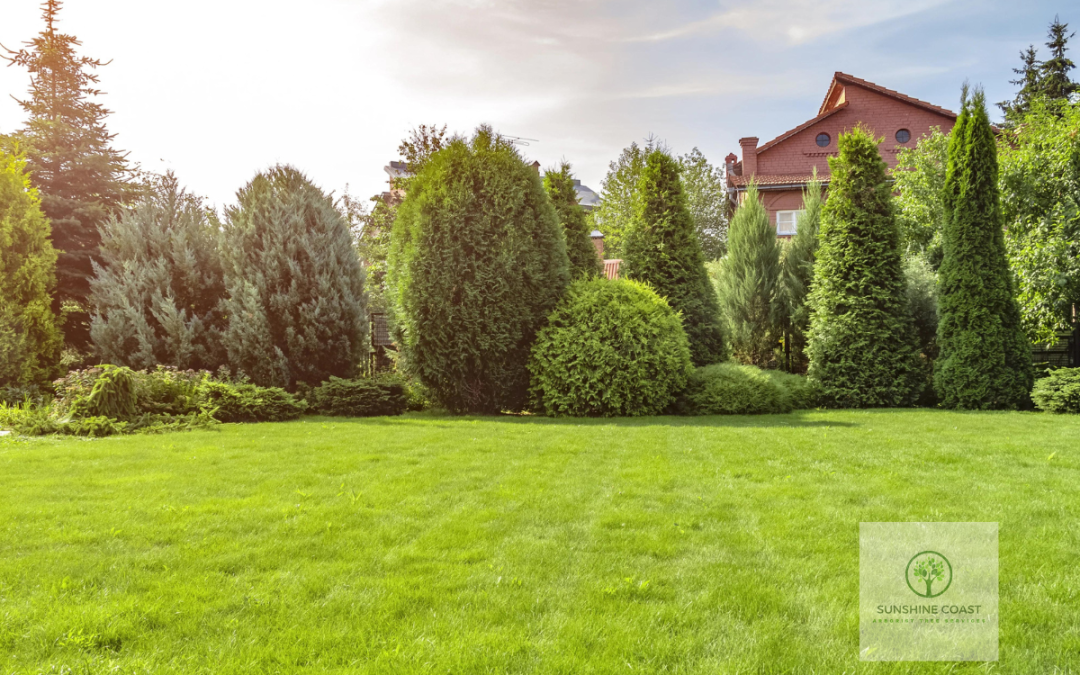When it comes to creating privacy in your garden, nothing beats trees. Not only do they provide natural screening, but they can also add year-round beauty to your landscape. If you’re looking for low-maintenance trees that will grow quickly and create a dense screen, keep reading. We’ve got the perfect trees for you! Many people are looking for trees for privacy, but don’t want the hassle of a high maintenance tree. There are many low maintenance trees that can provide privacy without taking up a lot of time or money. Here are some of the best options.
What types of trees provide privacy without being too high maintenance
If you’re looking for a little privacy in your backyard without all the hassle of maintaining a high fence, planting some trees is a great solution. But not all trees are created equal when it comes to privacy. Here are a few types of trees that make for good privacy screens without being too high maintenance:
Evergreens are a popular choice for privacy screens since they maintain their foliage year-round. One type of evergreen that is especially well-suited for this purpose is the Leyland cypress, which is fast-growing and can reach heights up to 70 feet. Another type of evergreen that makes a good privacy screen is the Thuja Green Giant, which can grow up to 3 feet per year and reaches heights of 50 feet or more.
Another type of tree that makes a good privacy screen is the honeylocust. Honeylocusts are fast-growing and can reach heights of 60 to 80 feet. They have a dense thorny foliage that provides excellent privacy without requiring much maintenance.
Finally, one type of tree that provides both beauty and privacy is the Japanese maple. Japanese maples are slower-growing than the other types of trees on this list, but they make up for it with their stunning fall colors and delicate foliage. They only reach heights of 20 to 30 feet, making them a good choice for smaller yards.
How to plant trees for privacy
If you’re looking for privacy, trees are a great option. They can provide shade and shelter from the sun, wind, and rain. They can also serve as a natural barrier to noise and prying eyes. But before you go out and plant a row of trees, there are a few things you need to consider.
First, think about the size of the trees you want to plant. If you’re looking for immediate privacy, you’ll need to choose trees that are large enough to provide coverage. Medium-sized trees can also be used for privacy, but they will take longer to mature.
Second, consider the location of the trees. Privacy trees should be planted on the property line or just inside it. This will ensure that they don’t interfere with your neighbor’s property or view.
Finally, make sure you have the right tree species for your climate. Some trees do better in certain climates than others. Once you’ve taken all these factors into consideration, you’re ready to start planting your privacy trees!

The benefits of having privacy trees in your yard
Privacy trees are typically taller than other types of trees, so they’ll provide a natural barrier between your property and your neighbor’s. Additionally, privacy trees can help to block out unwanted noise and visual distractions. Whether you choose evergreens or deciduous trees, privacy trees are a great way to create a peaceful retreat in your own backyard. However, there are a number of benefits that you may want to consider.
There are many benefits of having privacy trees in your yard. Here are some of the most notable ones:
- Privacy trees can provide shade on hot days, making your yard more comfortable to spend time in.
- They can also block out noise from the outside world, creating a more peaceful environment.
- Privacy trees can provide a sense of security, as they can make it more difficult for people to see into your yard.
- In addition, privacy trees can add value to your property and can help to make your yard more inviting.
Which trees are best for different climates
Are you looking for a privacy tree that can thrive in colder climates? If so, you may want to consider the Leyland cypress. This evergreen tree is known for its rapid growth rate and dense foliage, making it an ideal choice for privacy screens and windbreaks. The Leyland cypress can tolerate harsh winters and thrives in full sun, making it a versatile option for both cold and hot climates. Another privacy tree that does well in colder climates is the American arborvitae. This slow-growing tree has dense, scale-like leaves that provide excellent privacy and wind protection. It is also tolerant of cold weather and can be planted in partial shade or full sun. If you’re looking for a privacy tree that can withstand extreme temperatures, the Leyland cypress and American arborvitae are both good choices.
For a privacy tree that does well in hot climates, the Italian cypress is a good option. This evergreen tree can reach heights of up to 40 feet and has a narrow, columnar shape that makes it ideal for small spaces. Additionally, the Italian cypress is tolerant of heat and drought, making it a low-maintenance tree for hot, dry climates. Another option for hot climates is the desert willow. This fast-growing tree can provide shade and privacy in a short amount of time and is tolerant of both heat and drought. If you live in a hot climate, the Italian cypress and desert willow are both good choices for privacy trees.
How to care for privacy trees once they are planted
Most privacy trees need little in the way of care once they are established. However, there are a few things you can do to help them thrive. By following these simple tips, you can ensure that your privacy trees stay healthy and beautiful for years to come.
Tips on caring a privacy trees:
- Water regularly: Privacy trees need a consistent supply of water, so make sure to water them on a regular basis.
- Fertilize regularly: Fertilizing your privacy trees will help them stay healthy and strong.
- Prune as needed: Pruning will help keep your privacy trees looking their best and prevent them from becoming too overgrown.
The best time to plant privacy trees depends on the climate in your area. In general, it is best to plant privacy trees in the spring or fall. This will give them time to establish their roots before the summer heat or winter cold sets in. However, if you live in a hot climate, you may be able to plant privacy trees year-round. Just make sure to give them extra water during the hottest months of the year.
Conclusion
So, if you’re looking for a low-maintenance privacy tree, any of the options we’ve listed will do the trick. Just be sure to plant them in an area that gets plenty of sun and water them regularly until they become established. And don’t forget to tell us about your experience in the comments below – we always love hearing from our readers!
Reference:
Fast-Growing Trees for Privacy (By Zone)

